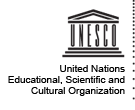Radio Journalism 2.0 for the Recognition and Exercise of the Right to Information
Given ALER's capacity and impact in Latin America, through its daily work sustained by its networks?concretely the Continental Information Network?it is absolutely necessary to the develop skills in its media practitioners to enable them to utilize ICTs to strengthen their journalistic work. So, ALER is seeking the ownership and management of ICTs, new ways of interacting with our audiences (having traditionally linked to them through our broadcasting practice), empowerment of citizens to exercise their rights and the use of technology as an instrument to mobilize traditionally marginalized sectors. Training in the use of ICTs and Journalism 2.0 software tools is fundamental for media practitioners. This way they can interact with citizens, making these audiences into participants in the production of information which holds the potential to help to strengthen citizenship, as well as to contribute to the democratization of communication through ICTs and create a more active communication process. The project aims to train 25 journalists from the Continental Information Network in using ICTs to approach their journalistic practice in a participative manner. (Journalism 2.0); strengthen the specialized training process of ALER's Information Network in using ICTs and Journalism 2.0; ALER's information production is based on a plurality of sources, which allows for the interpretation of an event in holistic way and therefore, taking the positions of, or enabling actions from, citizens based on the use of Journalism 2.0 tools; train 25 journalists from the Continental Information Network in Journalism 2.0 software tools; design a virtual education methodology to give theorical support to the monitoring system; design a virtual monitoring system to monitor the journalistic practices of the media practitioners who have been trained in Journalism 2.0; and carry out frequent monitoring of the activities of the journalists who are being trained.
The methodological guides were prepared and a training programme was carried out in Quito, Ecuador, in July 2009, with the participation of 20 journalists from Bolivia, Colombia, Ecuador, Peru and Venezuela. The subjects dealt with were: FTP, MS, RSS, Web 2.0, new information methods, blogs, how to prepare news for the web, digital audio and podcasting. The results of the training process were systematized in a document that contains: background; participants' profiles; methodology, modality and technologies; objectives and products obtained; strategies for follow-up and agreements; organizational issues; methodological and strategic concepts; products; monitoring plan. An evaluation tool was used by the workshop's participants. They emphasized the usefulness of new technologies in their daily work; the network's activities and the opportunity to exchange experiences were also highlighted as positive. The methodology for virtual education by means of bibliographic research was validated by the journalists. A system of electronic monitoring was created and validated, showing the advances and setbacks of journalists when introducing the subject of Journalism 2.0 and how they are using the technological tools.
